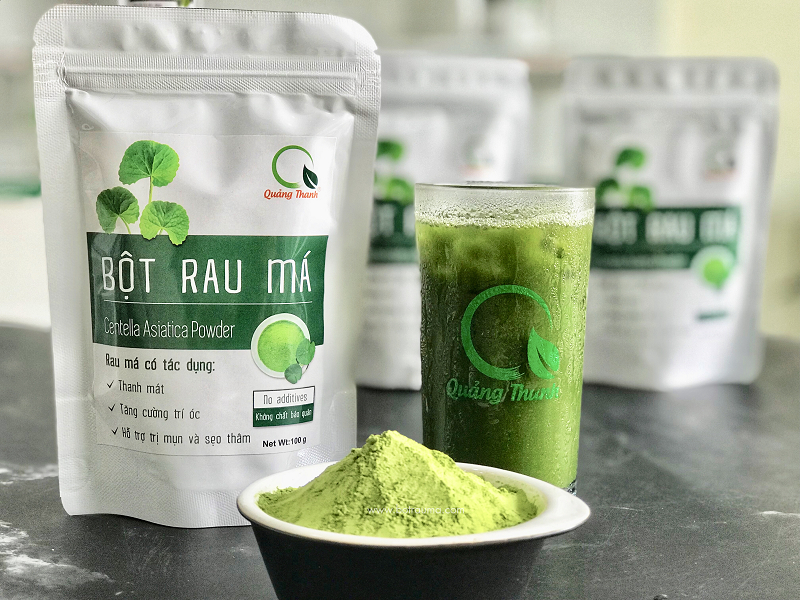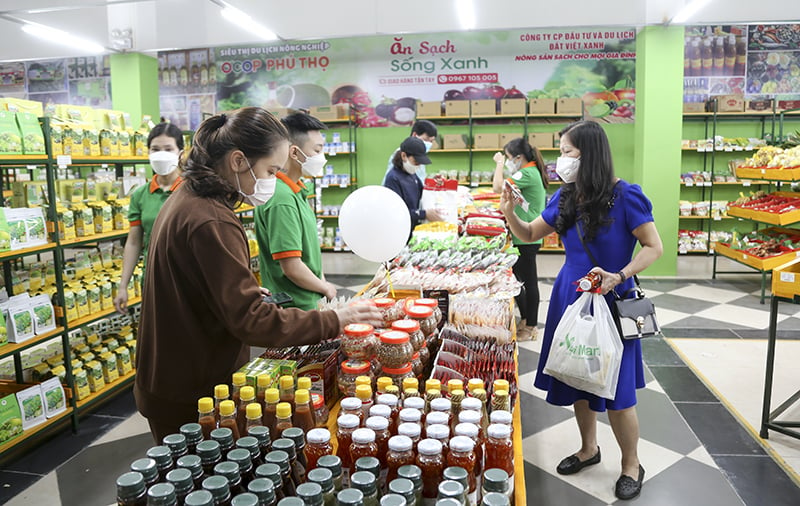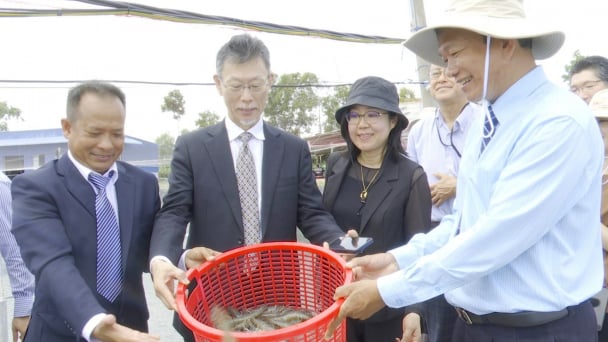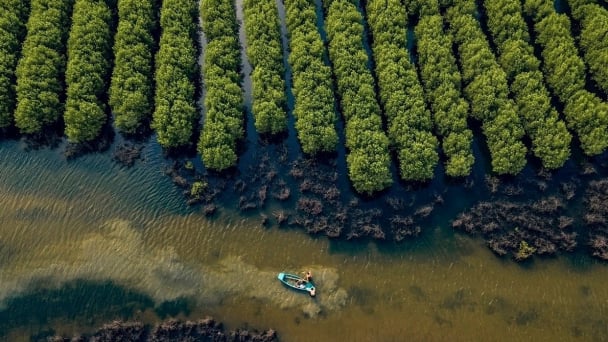June 15, 2025 | 13:34 GMT +7
June 15, 2025 | 13:34 GMT +7
Hotline: 0913.378.918
June 15, 2025 | 13:34 GMT +7
Hotline: 0913.378.918

Dr. Ngo Thi Thu Trang (middle), Deputy Director of the Saemaul Scientific Advice Council of the University of Social Sciences and Humanities - Vietnam National University Ho Chi Minh City, participated in the talkshow of the Vietnam Agriculture Newspaper.
Every Vietnamese wants to bring Vietnam’s OCOP products first to meet the needs of domestic consumers and then to approach international customers, aiming to enhance the value of Vietnamese OCOP products and promote the image of Vietnam to the world. One of the directions is developing OCOP products associated with community tourism.
Participating in the talkshow of the Vietnam Agriculture Newspaper, Dr. Ngo Thi Thu Trang, Deputy Director of the Saemaul Scientific Advice Council of the University of Social Sciences and Humanities - Vietnam National University Ho Chi Minh City, shared detailed information about this topic.
Dear Dr. Ngo Thi Thu Trang, as an expert on community tourism development, if choosing Vietnam’s OCOP products to introduce to foreign tourists, which product groups would you choose, and why?
In the six OCOP product groups, except for the 6th group, the group of tourism products, the remaining product groups, namely food, beverages, herbs, handicrafts, and ornamental creatures, are all necessary to be included in the tourism industry to introduce and sell to tourists.
Specifically, the food group is necessary because the basic needs of tourists when going to any region are food, experiences, and places to stay. Among the three above needs, food is very important, so OCOP products should include the products of the region that are so typical that if consumers want to enjoy them, they have to go to exactly that region, thereby enhancing the value of the products.
The second is the beverage group. For example, Go Den rice wine of Long An, if produced according to tradition, ensuring the consumer's health, medicine, quality, etc., can be considered a beverage brand of the homeland.

The centella asiatica powder product of Viet Nature Import Export Co., Ltd. is good for consumers’ health and of great interest to many people.
The third is the herb group. Currently, health tourism is "on the rise", so products good for consumers’ health, such as the centella asiatica powder product of Viet Nature Import Export Co., Ltd., are of great interest to many people. The herb group is more specialized than other product groups, and the assessment of the products' characteristics and properties is also more difficult than that of other groups because they must be tested by the Department of Health and the Ministry of Health. However, herbal products will help to improve the health of tourists when put into tourism, such as the medicine of the Red Dao people to soak their feet or some other herbal products to improve their health. Thereby contributing to increasing the value of the product as well as affirming its position.
The fourth is the group of handicraft products, which is very necessary because in the community tourism market, souvenirs are very limited. Therefore, handicraft products will become typical if each locality pays attention to making them souvenirs for tourists.
Furthermore, these are also products that the world market is very interested in. The trend of enjoying beauty is the current trend, so handicraft products are beautiful decorative products in the homes, offices, and living and working places of consumers. A group of handicraft products is thus necessary to put into tourism, in addition to making souvenirs, but also to be introduced to tourists, especially international customers, so that they know the ingenuity of the people in the villages. handicraft, thereby promoting the value of OCOP products in tourism.

According to Dr. Ngo Thi Thu Trang, OCOP product development needs to follow a sustainable direction.
Dear Dr. Ngo Thi Thu Trang, how will developing community tourism associated with OCOP products help in promoting and developing OCOP products even when exporting through tourism as well as exporting directly to foreign countries?
To develop OCOP products associated with community tourism, first of all, it is necessary to develop a true OCOP product, which means developing it in a sustainable way. To do that, subjects need to pay attention to the following actions:
The first is to eliminate the problem of brand theft. It means that there are many current OCOP products that have not yet built a brand identity and have not confirmed their brand, so many businesses have bought products and taken a brand, resulting in "3 NOs": no awareness about the product; no customers’ awareness about the subject; and no fair competition.
To limit "3 Nos", all subjects not only need to consider OCOP products as "brain children" but also must improve in terms of quality and packaging. Besides, to eliminate the problem of brand theft, subjects need to identify strong products from which to build the target market and the "personality" of the brand.
The second factor is to protect consumers. The third is to share the above values with all remaining OCOP products and OCOP subjects so that they can acknowledge that a true OCOP product will follow such a sustainable development direction.

Display point of OCOP products in a tourist attraction in Phu Tho.
When OCOP products attain such sustainable value, they will promote trade in different ways, including community tourism. After the product is guaranteed in terms of quality, brand, design, label, etc., it must be given a worthy position in the product display points. For community tourism, those are the display points at the rest stops in tourist areas.
Each tourist attraction or each person doing community tourism will be a messenger with the mission of conveying the value of their OCOP products to tourists. Moreover, the display points of OCOP products in tourist attractions need to contain value, affirm the position of OCOP products, protect the subjects who always sacrifice, and find ways to improve their products.
Vietnam has an abundant number of domestic and international tourists. Therefore, for those who are not eligible to bring their products to the international market, they should develop product display points in places of tourism development to introduce their products. Tourists there will have the opportunity to buy, enjoy, and experience typical local products with Vietnamese brand values. OCOP products are thus easily brought to tourists, and the value of OCOP products will spread.
Since then, on-spot export of OCOP products from domestic and international markets has shown great potential, as well as affirming the brands of OCOP subjects who are devoted to Vietnam’s OCOP products and OCOP program.
Thank you, madam!
Translated by Huyen Vu Thu
![Turning wind and rain into action: [4] Bringing climate bulletins to remote and isolated areas](https://t.ex-cdn.com/nongnghiepmoitruong.vn/608w/files/linhnhp/2025/06/14/1152-z6704423696987_15fd32ffc26d590d204d520c9dac6786-nongnghiep-151141.jpg)
(VAN) The Vietnam Agriculture and Nature Newspaper interviewed Mr. Vu Thai Truong, Acting Head of Climate Change and Environment at UNDP Vietnam, to gain deeper insight into how climate bulletins are delivered to farmers.

(VAN) In Tien Giang, a high-tech shrimp farm has developed a distinctive energy-saving farming model that has yielded promising results.
![Turning wind and rain into action: [3] 300.000 farmers benefit from agro-climatic bulletins](https://t.ex-cdn.com/nongnghiepmoitruong.vn/608w/files/news/2025/06/12/e5a48259d6a262fc3bb3-nongnghiep-125122.jpg)
(VAN) The agro-climatic bulletin has become a valuable tool for farmers in the Mekong Delta. After more than five years of implementation, the initiative is gradually being expanded nationwide.
![Turning wind and rain into action: [2] Providing forecasts to the people](https://t.ex-cdn.com/nongnghiepmoitruong.vn/608w/files/news/2025/06/12/e5a48259d6a262fc3bb3-nongnghiep-103927.jpg)
(VAN) In addition to improving the quality of hydrometeorological forecasts, putting forecast bulletins into practical use is crucial for production and disaster prevention.

(VAN) Blue carbon is receiving attention for its rapid absorption capacity and vast potential. It represents a promising nature-based solution to respond to climate change.
/2025/06/11/3507-1-161904_583.jpg)
(VAN) Seagrass beds and coral reefs serve as 'cradles' that nurture life in the ocean depths, creating rich aquatic resources in Vietnamese waters.
![Turning wind and rain into action: [1] Forecasting for farmers](https://t.ex-cdn.com/nongnghiepmoitruong.vn/608w/files/news/2025/06/11/e5a48259d6a262fc3bb3-nongnghiep-111919.jpg)
(VAN) Weather is no longer just a matter of fate. Forecasts have now become an essential companion for farmers in every crop season.